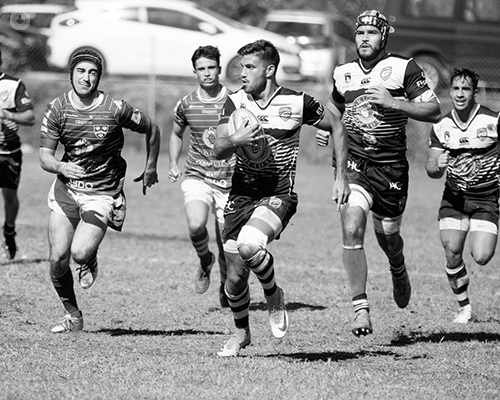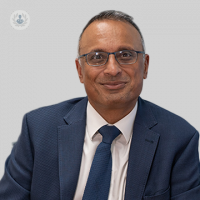Meniscus tear of the knee: what to do next
Escrito por:The menisci (cartilage) function as a soft cushion in the knee. They are at the end of the thighbone (femur) and at the top of the shinbone (tibia) and work as a shock absorber between the two bones during activities such as walking, running and jumping.
Meniscus tears are common injuries for sportsmen, from taking a hard tackle in football to a sudden pivot in rugby. Consultant orthopaedic surgeon Mr Paul Trikha explains what a meniscus tear has been described as feeling like and how it can be treated.

What do the menisci do in the knee joints?
The meniscus on the inside of the knee is called the medial meniscus and on the outside the lateral meniscus. The menisci act as a shock absorber, they share the load and provide nutrition and lubrication to the joints as well.
How can the menisci tear and what would this feel like?
Meniscal tears are very common injuries. There is a higher risk in patients who are active and those who are competing in sports, but equally, it can be part of a degenerative process and can happen just by tripping on a step or a small fall.
Traumatically, it can be from a forceful twisting injury to the knee. If you tear your meniscus, there are a number of symptoms and signs you can experience. It could be pain that comes and goes, swelling, a limp and, in extreme circumstances, the knee can catch or lock, which is when the meniscus gets trapped within the knee joint.
What forms of exercise contribute to meniscus wear and tear?
The meniscus tears are more common in people who are active and play sports that involve pivoting and twisting. Footballers have a high risk of cartilage injuries, as do rugby players. It's a very common injury on the ski slopes as well. Not only young patients have meniscal tears, but as we continue to compete in sports to a much older age it's more common in the weekend warrior who plays vets rugby and people who play social tennis as well.
How can meniscus problems be treated? Is surgery a requirement?
The meniscus can be treated in a number of ways and it depends on what kind of tear you have and how it happened. The meniscal tear could be degenerate with no specific traumatic injury, or the tear could be traumatic thanks to a significant forceful twisting injury to the knee.
Some people use 'shoes' as an analogy. An old trainer with some holes in it could be considered a degenerative tear. A new shoe where the heel has come off could be a traumatic tear. The degenerative tear does not need surgery. It does not need further holes to be removed or the tear to be excised.
A degenerative tear does not do well with keyhole surgery and will often heal if you look after it. This means you can still use it but avoid high impact activities, take painkillers, have regular physiotherapy and conservative treatments.
If, however, you have a traumatic tear that hasn't settled down, you do want to repair that meniscus. We'll discuss how the meniscus is important in providing a cushion and protecting the ends of the bones and to stop or delay any arthritis. You will want to see a surgeon who's capable of repairing the meniscus and stitching it up so you can have that meniscus for the long term.
Do not hesitate to book an appointment with Mr Trikha who practises at the Surrey Orthopaedic Clinic in Guildford.


